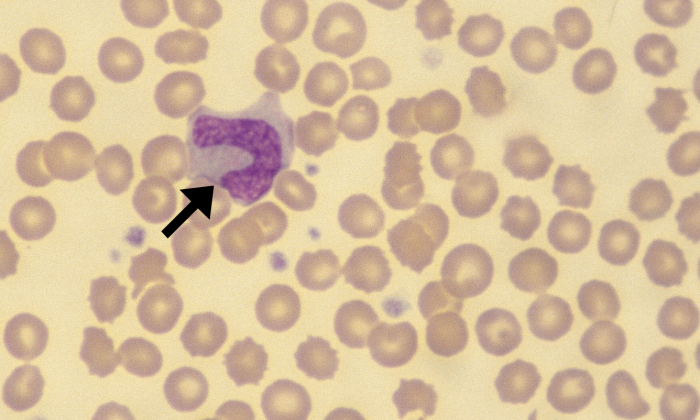Monocytes

Morphology: leukocytes with pleomorphic nuclei (usually lobulated but may be round or kidney-shaped) and blue-gray cytoplasm containing occasional vacuoles or fine pink granules. Monocytes are larger than most other leukocytes. Considerable variation in appearance within and between species.
Look alike: band neutrophils (canine monocytes may have band-shaped nuclei), lymphocytes (equine monocytes may resemble lymphocytes).
Clinical relevance: monocytosis (↑ monocytes in peripheral blood) may be associated with corticosteroids (in dogs), granulomatous inflammation, immune-mediated diseases, tissue necrosis, and neoplasia. Monocytes leave the blood and transform into macrophages within tissues, so significant inflammation or immune-mediated disease may be present without causing monocytosis.







